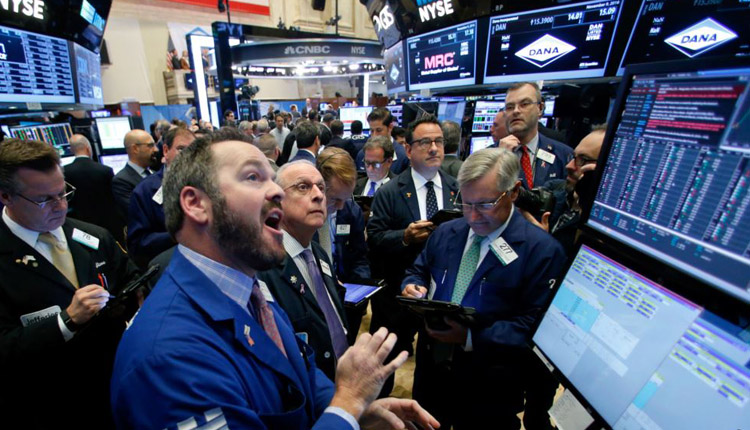Dow rises 240 points to all-time peak as Wall Street ends record-breaking week on a high note
U.S. stocks rose to all-time highs on Friday as investors ended a record-setting week on a high note. The Dow Jones Industrial Average jumped 243.95 points, or 0.9%, to 27,332.03.
The S&P 500 gained 0.5% to end the day at 3,013.77, notching its first close above 3,000. The Nasdaq Composite advanced 0.6% to 8,244.14.
The major indexes passed multiple milestones and posted solid gains this week amid testimony from the top Federal Reserve official signaling that a rate cut was coming.
The Dow closed above 27,000 for the first time on Thursday and Friday’s gain brought its increase on the week to 1.5%. The S&P 500 rose 0.8% and the Nasdaq, meanwhile, ended the week up 1%.
Volume was light on Wall Street Friday, however, with around 30 million shares of the SPDR S&P 500 ETF changing hands, the lowest amount of the year.
“You can’t fight the Fed here,” said Michael Katz, partner at Seven Points Capital. “We have a strong bull market and we have a strong uptrend. As long as we’re heading higher, we’ve got to keep buying dips and not fight the trend.”
Shares of Dow, Inc. led the Dow Industrials higher, rising 4%. Intel and Caterpillar, meanwhile, climbed 2.7% and 3.3%, respectively. J.B. Hunt Transport Services was the best-performing stock in the S&P 500, jumping 5.9%, and leading a 1.8% gain in the industrials sector.
Fed Chair Jerome Powell testified in front of congressional leaders this week that “crosscurrents” from weaker overseas economic activity and rising trade tensions are dampening the outlook on the U.S. economy.
“Powell gave us juice this week. So, maybe the range on the S&P 500 is now 2,500 to 3,100,” said JJ Kinahan, chief market strategist at TD Ameritrade. But “I think we’re rangebound until tariffs are settled.”
Market expectations for lower rates currently sit at 100%, according to the CME Group’s FedWatch tool. Traders are also pricing in a 20% chance of the Fed cutting by 50 basis points. The Fed next decides on interest rates on July 31.
Expectations for lower rates persisted this week despite the release of some stronger-than-expected inflation data. The producer and consumer price indexes — two widely followed measures of inflation — rose more than expected last month, the Labor Department said this week. Last week, the U.S. government reported stronger-than-expected jobs growth for June.
“The Fed is on a one-way street headed to a cut,” said Art Hogan, chief market strategist at chief market strategist at National Securities. “The market is clearly in ‘don’t-fight-the-Fed’ mode.”
“Over the next few weeks, we’ll shift our focus to something more fundamental: earnings,” he said. “It’s never too comfortable to come into earnings season trading at all-time highs.”
The corporate earnings season kicks off next week as major banks like J.P. Morgan Chase, Citigroup, Goldman Sachs and Bank of America scheduled to report. Estimates for the season are downbeat, however.
According to FactSet, analysts expect S&P 500 earnings to have fallen by more than 2% in the second quarter.
Source: CNBC



